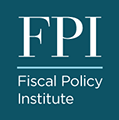Recent Work
Impact of Payroll Mobility Tax on New York City Workers
Governor Hochul’s directive to the MTA to 'indefinitely pause' planned congestion pricing for New York City, and her proposed alternative revenue sources, are ill-advised tax and economic policy.
Statement on New York City Budget Agreement
Governor Hochul’s directive to the MTA to 'indefinitely pause' planned congestion pricing for New York City, and her proposed alternative revenue sources, are ill-advised tax and economic policy.
Temporary MTA Funding Plan Jeopardizes New York’s Fiscal Future
Governor Hochul’s directive to the MTA to 'indefinitely pause' planned congestion pricing for New York City, and her proposed alternative revenue sources, are ill-advised tax and economic policy.
Who is Leaving New York State? Part II: Social Characteristics
The Fiscal Policy Institute today released a new report in its state migration series, "Who Is Leaving New York State? Social and Labor Characteristics", which finds that affordability — and in particular housing and the cost of raising a family — are increasingly driving State population loss.
Enacted Budget Financial Plan Shows Healthy Fiscal Outlook
The fiscal year 2025 enacted budget totals $237 billion, an inflation-adjusted decline of 0.4 percent from fiscal year’s 2024 total budget. In non-inflation-adjusted terms (nominal dollars) this represents an increase from fiscal year 2024’s total budget of $231.6 billion.
FPI on NYC FY25 Executive Budget: Real Revenue Not Aligned with City’s Pessimistic Forecasts
Under the fiscal year 2025 executive budget, inflation-adjusted state funding would fall for a third consecutive year. While State spending rose in response to Covid, it will return to its pre-Covid trend by fiscal year 2025.
Fact Sheet on Fiscal Year 2025 Enacted Budget
The fiscal year 2025 enacted budget totals $237 billion, an inflation-adjusted decline of 0.4 percent from fiscal year’s 2024 total budget. In non-inflation-adjusted terms (nominal dollars) this represents an increase from fiscal year 2024’s total budget of $231.6 billion.
FPI on Housing, Healthcare, Education & Climate in FY 2025 Enacted Budget
Under the fiscal year 2025 executive budget, inflation-adjusted state funding would fall for a third consecutive year. While State spending rose in response to Covid, it will return to its pre-Covid trend by fiscal year 2025.
Modest Budget Fails to Make Investments Needed to Address Affordability Crisis & Stem Population Loss
Under the fiscal year 2025 executive budget, inflation-adjusted state funding would fall for a third consecutive year. While State spending rose in response to Covid, it will return to its pre-Covid trend by fiscal year 2025.
Debunking Common Misconceptions about the Size of the State Budget
Under the fiscal year 2025 executive budget, inflation-adjusted state funding would fall for a third consecutive year. While State spending rose in response to Covid, it will return to its pre-Covid trend by fiscal year 2025.
Guide to the Budget Debate
FPI's analysis of the legislative and executive budget proposals for fiscal year 2025.
Fiscal Analysis: 2025 Revenue To Exceed Projections by At Least $4 Billion
The DOB’s assumed growth rates for State revenue are unusually low by historical standards, and are out of sync with most forecasts of U.S. economic growth over coming years. FPI expects State revenue growth in fiscal year 2025 will likely exceed current forecasts by at least $4 billion.
One-House Budgets Wisely Raise Taxes On Wealthiest New Yorkers — But Only Temporarily
In light of New York’s affordability crisis and the need for deeper State investments to lower the cost of living, the one-house budgets wisely invest in affordable housing, healthcare, and higher education. Additionally, the legislature sensibly rejects the Governor’s proposed cuts to public schools and home care worker wages.
What to Look for in the One House Budgets
The New York State Senate and Assembly will soon release their proposals for the fiscal year 2025 budget. Following last week’s revenue consensus, the legislature will be able to propose $1.3 billion more in spending than the executive budget. This additional revenue will allow the legislature to restore many of the budget cuts proposed by the executive budget, especially to school aid and home care. The legislature can, however, go beyond restoring the proposed cuts and put forward deeper investments in public services that address New York’s affordability crisis. These investments will require raising additional revenue.
Tax Policy Brief: Fiscal Stability and Progressivity in the Personal Income Tax
New York State often faces calls for higher tax revenue, whether due to concerns over revenue shortfalls or a desire to increase public spending. This brief assesses the soundness of raising revenue through the Personal Income Tax, examining the fiscal stability of such revenue, fundamental fairness considerations, and responses to common arguments against raising the state income tax.
